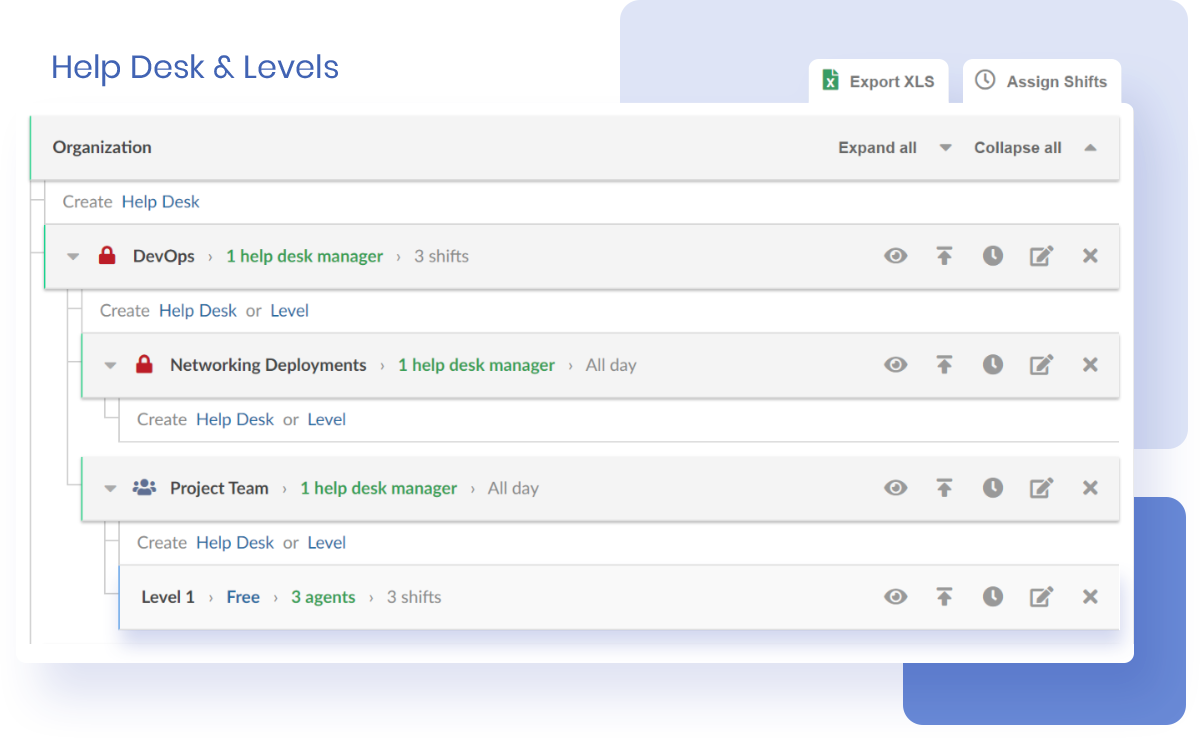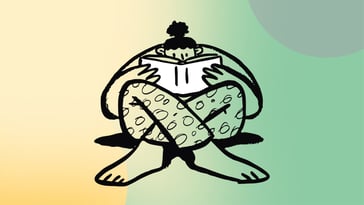Building a Maintenance ticketing system is a strategic move for any company looking to streamline its Facility Management operations. It helps manage the influx of maintenance requests through tickets and streamlines the entire process from reporting to resolution.
This is where the concept of Enterprise Service Management (ESM) comes into play, expanding the traditional IT Service Management (ITSM) framework to encompass all facets of organizational support, including Facilities.
If optimizing maintenance operations is your priority, the best step you can take is to use a help desk as a maintenance ticketing tool. You should look for solutions that are user-friendly, facilitate training, and ideally align with tools already in use within your organization for a seamless transition and increased return on investment (ROI).
Want to know more? In this guide, we'll further explore the features these systems should have, outline a step-by-step process for building your help desk using InvGate Service Management, and share best practices for managing it effectively.
Let's get into it.

What is a Maintenance ticketing system?
A Maintenance ticketing system, also known as a Maintenance help desk, is a digital platform that manages and automates the reporting, tracking, and resolution of maintenance issues. It's an application of an ESM approach, which broadens the scope of ITSM to include other departments like Facilities or Human Resources.
In a nutshell, it helps Maintenance teams prioritize and assign tasks, monitor workloads, automate activities, and ensure that issues are resolved in a timely manner.
Additionally, Maintenance ticketing systems often include features such as Asset Management capabilities, inventory tracking, and preventive maintenance scheduling. They can also integrate with other systems, such as work order management, to streamline the overall maintenance process.
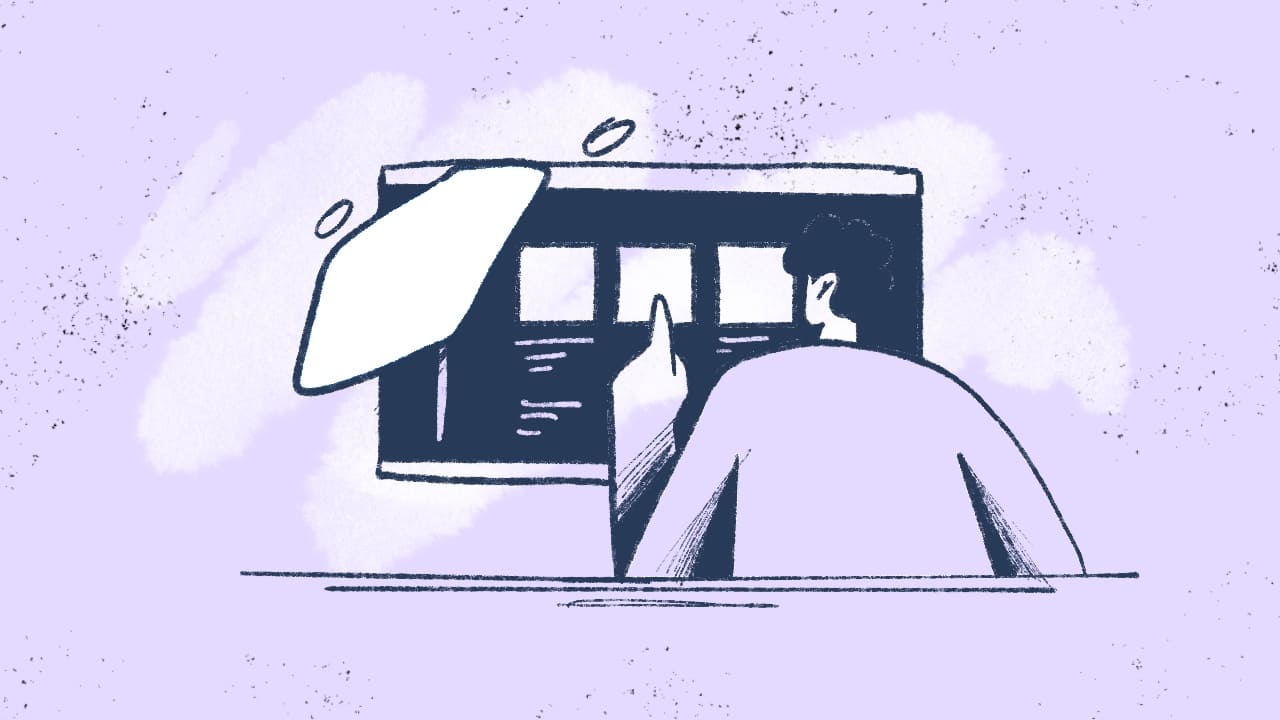
Why do you need a shared service center for Facility Management?
Having a unified platform for managing maintenance requests across various departments is efficient and cost-effective. A shared service center for Facility Management ensures that maintenance requests are handled efficiently, leading to faster resolution times and improved satisfaction.
Also, you can reduce downtime and improve the team’s productivity by ensuring that all maintenance activities are completed systematically.
To complement this, a shared Maintenance system promotes transparency and accountability. Managing maintenance tickets with a help desk to centralize them and track their progress makes monitoring the Maintenance team's performance easier and ensures that tasks are being addressed promptly. All of this is great for communication and collaboration between different departments.
The platform also provides valuable data and analytics to help identify trends, areas for improvement, and resource allocation. Such insights into the overall health of the organization's facilities help address potential issues, implement preventive maintenance measures, and ultimately prolong the lifespan of their assets.
Finally, organizations using this type of shared center enable better resource allocation and planning. A centralized system to track maintenance requests helps organizations to identify recurring issues, prioritize tasks effectively, and allocate resources where they are most needed. Leading, of course, to cost savings and optimized use of Maintenance personnel and equipment; and to ultimately contribute to the overall success and sustainability of the organization.
10 benefits of a help desk for Maintenance professionals
Efficient and responsive, a help desk for Maintenance professionals offers many benefits. These are some of the main ones:
- Streamlined processes: Leveraging this tool allows professionals to optimize their workflows, leading to a more efficient management of tasks and issue resolution.
- Enhanced tracking and reporting: With tracking and reporting capabilities, teams can monitor progress, identify maintenance trends, and make informed decisions based on data.
- Centralized communication: Such a system provides a central hub for seamless communication, ensuring that Facilities requests are efficiently managed and addressed.
- Improved resource allocation: Organizations can effectively allocate resources, prioritize tasks, and optimize Maintenance personnel and equipment use.
- Heightened productivity and reduced downtime: Implementing it can lead to increased productivity, quicker issue resolution, and ultimately reduced downtime, ensuring that facilities remain operational and well-maintained.
- Smoother collaboration: A ticketing system facilitates collaboration among Maintenance teams, enabling them to work together more effectively, share knowledge, and coordinate efforts to address complex maintenance issues.
- Higher accountability: It promotes accountability by providing a clear record of the department's requests, actions taken, and resolutions, ensuring that responsibilities are clearly defined and tracked.
- Support for proactive maintenance planning: Professionals can identify recurring issues, anticipate needs, and implement proactive measures to prevent potential problems. A proactive approach can also help lower maintenance costs.
- Improved Compliance Management and documentation: Maintenance professionals can maintain compliance with regulations and standards by documenting their activities, ensuring that necessary inspections and repairs are conducted and recorded.
- Enhanced customer satisfaction: Finally, these systems are great because they allow for faster response times, improved communication, and more efficient issue resolution, ultimately resulting in higher satisfaction levels among users and stakeholders.

4 keys to pick your Facilities help desk tool
When picking a Facilities help desk tool that can suit you, here are our top considerations to keep in mind:
- Shared tooling: Consider leveraging tools that are already being used by your IT and HR departments, which ideally should be an ESM solution. This approach enhances familiarity among your team and can improve the return on investment by maximizing the use of existing resources and expertise.
- Ease of adoption: Look for a platform that uses Low-Code/No-Code technology, making it simple for your team (who might not necessarily be tech-savvy) to adopt and use without extensive programming knowledge. The tool should be intuitive and user-friendly, requiring minimal training for your team to become proficient in its use.
- Customization: Look for a help desk tool that offers customization options, allowing you to tailor the system to your specific Facility Management processes and requirements.
- Scalability: Choose a solution that can scale with your organization's needs, accommodating growth and changes in the scope of Facilities Management without requiring a complete overhaul of the system.
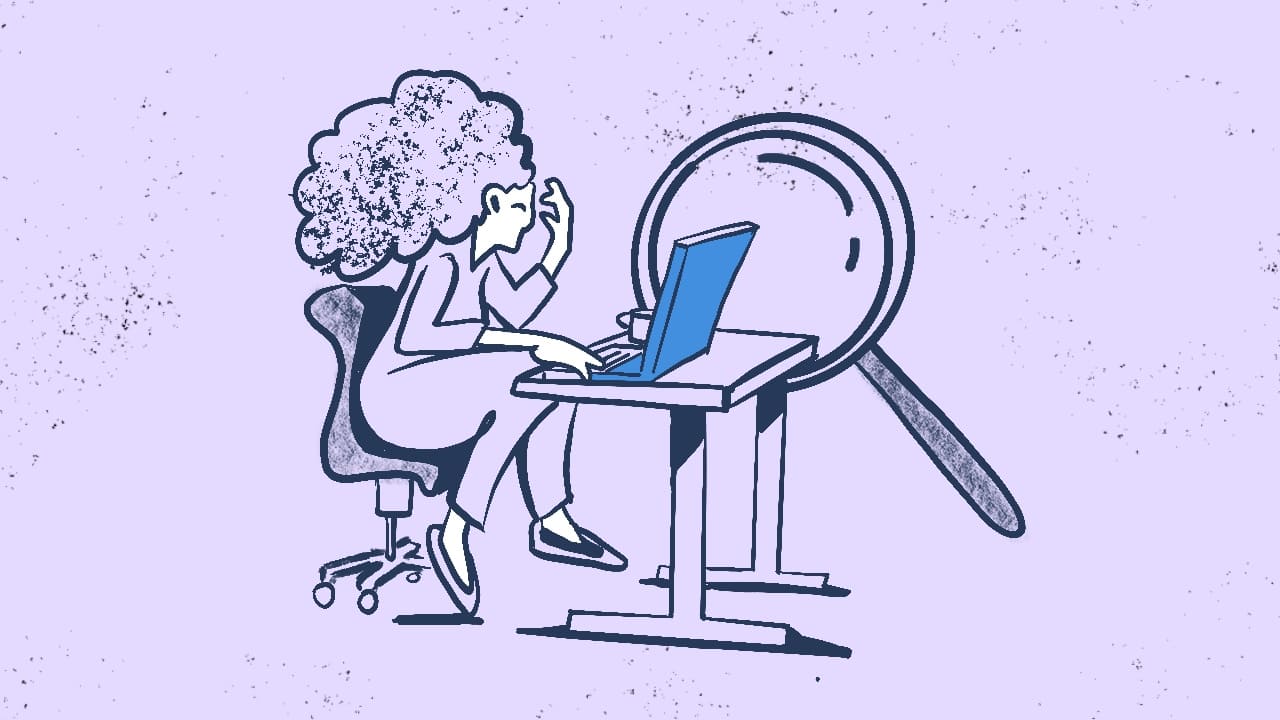
5 features to look for in Maintenance Ticketing Systems
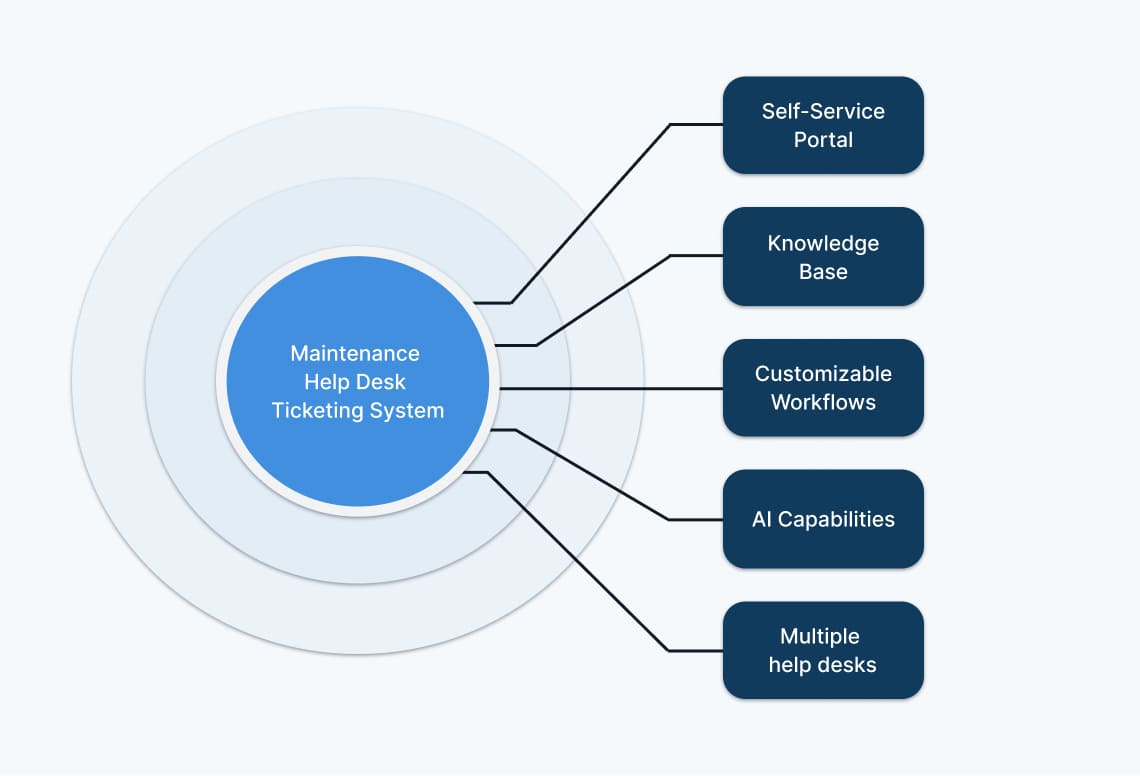
Apart from the considerations listed above, a robust Maintenance help desk ticketing system should incorporate specific features to streamline its processes. Some of the main ones include the following:
1. Self-service portal
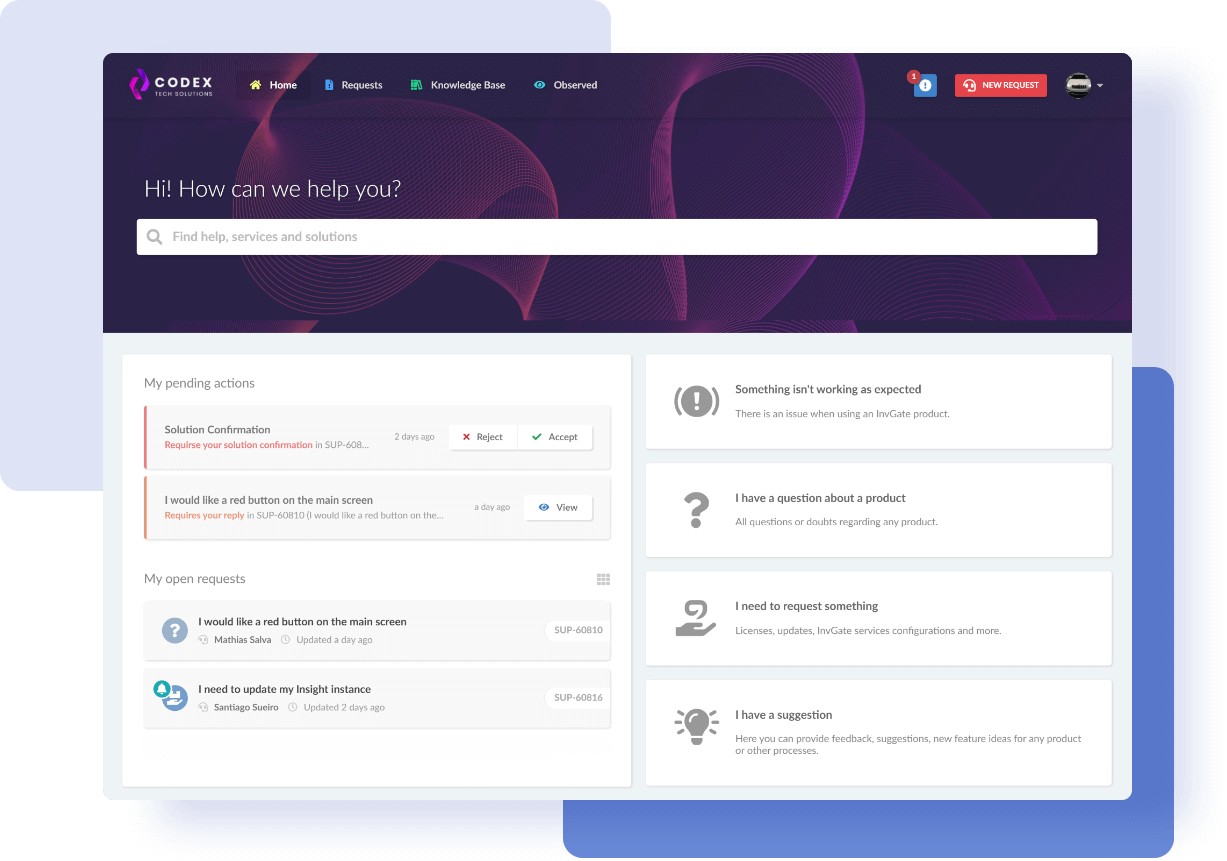
A self-service portal allows users to submit and track maintenance requests independently, reducing the need for direct interaction with support staff.
For instance, an employee notices a broken printer in the office and uses the self-service portal to submit a maintenance request, including details of the issue and its location. Then, they can track the progress of the request and receive updates without needing direct interaction with the maintenance team.
2. Knowledge base
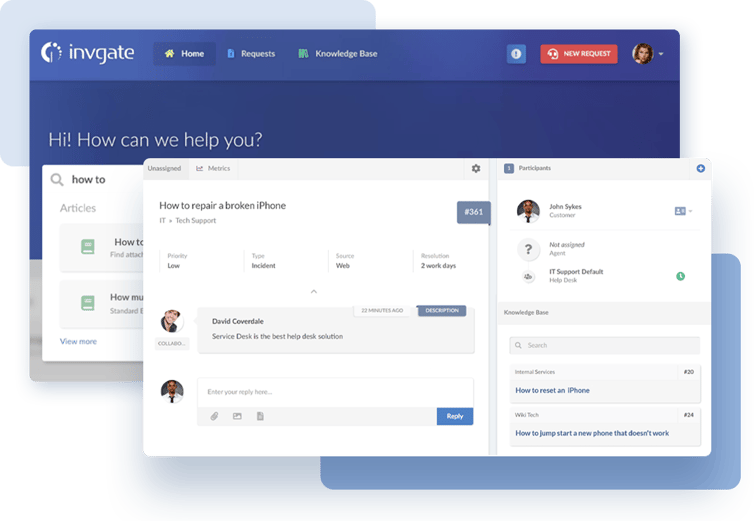
A knowledge base works as a repository of information and solutions that can be accessed by users and support staff to troubleshoot common tickets. This can be internal, for the Maintenance team, or external and incorporated within the self-service portal for users to read through before submitting their issue.
In a hypothetical scenario, a Maintenance technician encounters an error with a specific type of machinery. They can access the knowledge base to find troubleshooting guides, manuals, or previous solutions related to the issue, enabling them to resolve the problem efficiently.
3. Customizable workflows and automation
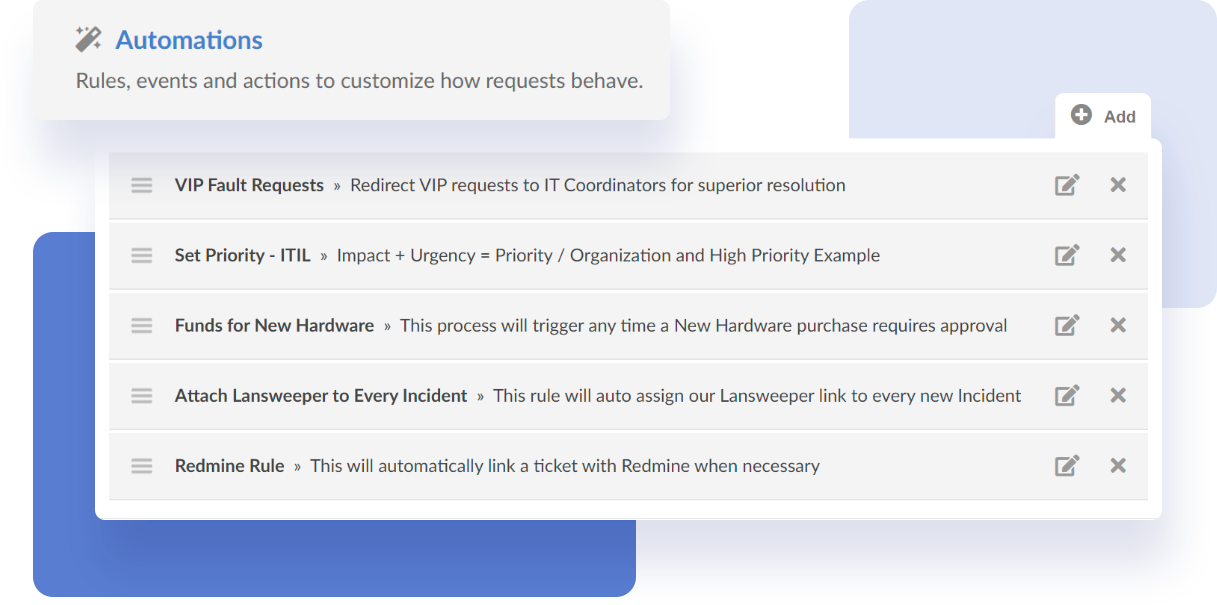
The ability to tailor workflows to specific maintenance processes and automate routine tasks for increased efficiency is a key benefit of incorporating a help desk.
For example, when users submit requests, the system automatically routes the tickets to the appropriate team members, notifies stakeholders, and initiates approval processes based on predefined workflows, streamlining the maintenance request handling process.
4. AI capabilities
The integration of artificial intelligence (AI) capabilities into the help desk supports the staff providing them with resources to troubleshoot issues more efficiently and effectively, thus improving customer satisfaction.
Features such as AI-Improved Responses and Support Assist can help your team by giving them recommendations, saving them time and enhancing the quality of the service they provide.
5. Multiple help desks with segmented SLA policies
The tool should support multiple help desks with distinct service level agreement (SLA) policies. As we mentioned before, a key consideration when choosing a solution for a shared service system is that it can incorporate different departments to maximize its value and reduce the need for multiple trainings.
For instance, in a large organization with different departments or facilities, each department may have its own help desk with specific SLAs tailored to its standards instead of sharing a unique metric that might not apply to all of them. This allows for efficient management of maintenance requests based on departmental requirements.
How to build a help desk for Maintenance in six steps
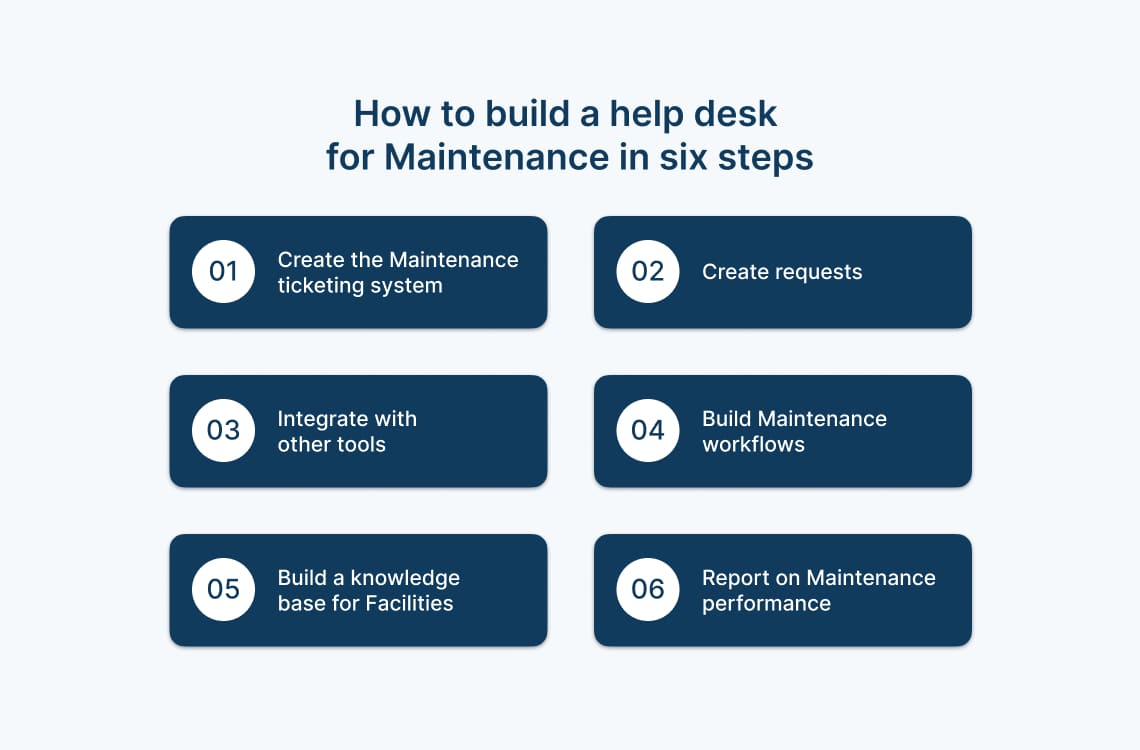
Now that you know the what and the why, let's move on to the how. Only six steps separate you from having a Maintenance help desk up and running.
Keep reading to see how it's done!
Step 1. Create the Maintenance ticketing system
To get started, you must create the Facilities help desk within your instance. There, you’ll populate the facilities team within the system.
Under Settings >> Help desks, you can create a simple structure that includes two basic levels: Facilities level one and level two. This way, you have frontline support staff that can take care of most requests, but if they are not equipped to handle some of them, the next level is set to revise more complicated cases.
Step 2. Create requests
Then, to create specific requests, go to Settings >> Catalog. Here, you can take advantage of the tool’s customization capabilities to suit your specific department and create, as you please, the categories that better fit your team's capabilities and user needs.
For instance, you can name one “General Service and Maintenance” and one called “Building Services.” Our tool has additional features like keywords, icons, and an assignment team, and you can add these items to make them easier to allocate.

Step 3. Integrate with other tools
In order to incorporate it into your company’s broader operations smoothly, the next step is to integrate your main communication channels, such as email and Microsoft Teams. This is great for end-users since they can maintain contact with the maintenance team, ensuring effective adoption and avoiding the use of informal channels.
Plus, you can also integrate InvGate Service Management with Asset Management to add functions like inventory tracking and preventive maintenance scheduling.
Step 4. Build maintenance workflows
Once you have created the help desk and integrated the appropriate systems, it’s time to build your workflows. These will streamline your facilities department by automating tasks, improving communication, and ensuring efficient coordination of maintenance, requests, and resource allocation.
For more complex requests like “Office Moves,” you can create workflows like Onboarding of Facilities Management and include multiple steps and approvals between teams. This way you can manage the work efficiently and make sure that the right requests go to the right team.
Step 5. Build a knowledge base for Facilities
You’ll want to populate the knowledge base with complete articles that include policies, how-to's, and frequently asked questions so that your agents can reference them and easily attach them to tickets. The idea is to also make them available for other employees across the organization to find them on their own.
Step 6. Report on Maintenance performance
Once you have this system in place for some time, the final step is to start reporting on the workload. To do so, go to "Reports" where you can build them according to your chosen help desk metrics.
For instance, you can create one about the Ticket Volume per quarter per team or per agent, and interchange categories as you please. It’s a task you can generate manually and within seconds or you can automate to be sent via an email to the interested parties on a set schedule.
As you've seen, building a maintenance ticketing system within InvGate Service Management is a simple process. But that’s not it; the tool also enables organizations to manage services across different business functions, allowing for the integration of IT, HR, Facilities, and more.
Request your 30-day free trial (no credit card required) and look through the solution in your own time!

Best practices to handle a Facilities shared service center
Once your Facilities shared service center is up and running, implement the following best practices to improve operational efficiency:
- Maintain transparent and open communication channels: This ensures that all stakeholders, including employees, maintenance staff, and management, can easily communicate issues, updates, and resolutions, ultimately leading to a more responsive facility management process.
- Regularly update and review the knowledge base: This resource needs to stay current with the latest maintenance procedures, troubleshooting guides, and solutions so both employees and maintenance teams can access relevant information quickly, facilitating efficient problem resolution.
- Leverage data and analytics: Tracking performance is crucial for identifying trends, bottlenecks, and areas for improvement within the facility management processes. This analysis enables the Facilities help desk to continuously refine workflows, response times, and overall efficiency, enhancing service delivery and customer satisfaction.

To conclude
Implementing a Maintenance ticketing system provides a centralized platform for reporting and addressing issues, leading to quicker problem resolution, improved resource allocation, and heightened overall maintenance effectiveness.
When choosing a system, remember to select a platform that is aligned with your team's capabilities and technical expertise, and seek out essential features that will streamline your maintenance tasks and processes.
As you’ve seen here, setting up your Facilities shared services system on InvGate Service Management is straightforward. In six simple steps, you can have it operating smoothly. Also, its user-friendly interface will help you ensure adoption across your organization.
Ready to take the next step? Ask for a 30-day free trial and explore how InvGate Service Management can revolutionize your Maintenance Management.













